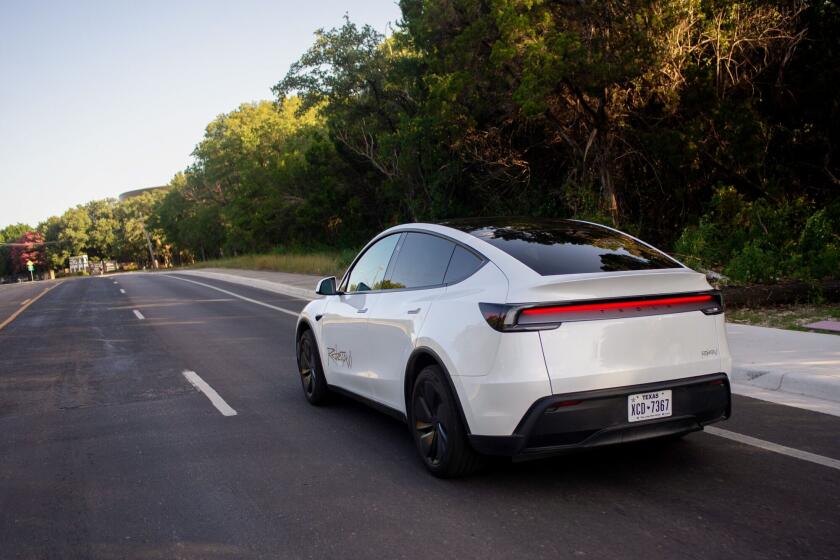Buckling Down to Buckling Up
- Share via
Late last year New York became the first state to adopt a mandatory seat-belt-usage law. It’s working. The use of seat belts has risen from an estimated 16% to 70%, and the first three months of 1985 saw traffic deaths in the state fall by more than 25% from a year earlier. If the same degree of compliance could be extended across the country, up to 12,000 lives could be saved annually. Starting next Jan. 1 California will join other states that are committing themselves to this life-saving effort. That’s when new seat-belt legislation, which Gov. George Deukmejian says he will sign, takes effect.
A portion of the new law seems certain to be tested in court. That is the provision requiring auto makers to provide passive-restraint devices on all cars sold in California beginning in late 1989. Right now two such devices are available. One is the air bag, which inflates during a front-end collision to provide front-seat passengers with marginally greater protection against impact--provided that they are also wearing seat belts when a crash occurs. The other is a seat-belt system that automatically secures passengers once a car’s doors are closed.
A mandatory seat-belt-usage law with $50 fines provided for those who ignore it obviously is a powerful incentive to get motorists to buckle up. But the insurance companies still want passive restraints, and their view prevailed in the Legislature. If the courts uphold that view, which passive-restraint device would be preferable? The automatic locking belt would be the first choice, since it has the advantages of being both initially cheaper and instantly reusable--unlike the air bag, which has to be repacked and recharged after use.
Our own view remains that the best safety device of all, in terms of cost-benefit and proven protection, is the seat-belt system that has been mandatory for many years. If expanded use of this system proves high during the first few years of the new belt law, the Legislature ought properly to reconsider its plan to require passive restraints.






